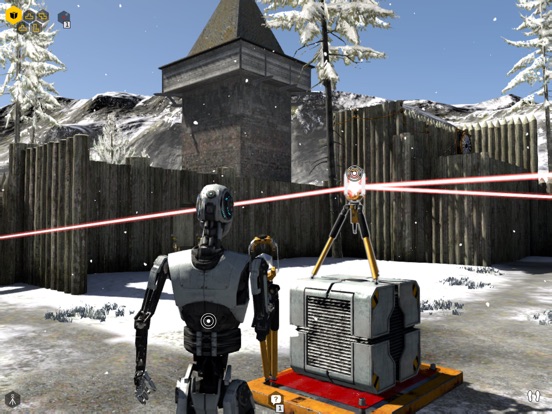

There are also similarities between The Talos Principle and Jonathan Blow’s upcoming game The Witness, and since that is the game that I am presently most excited for, I took some time to sit down and play Talos. Even when I first watched him playing it, it still seemed uninteresting, but as happens sometimes when you hear a lot of people talking about a game: you start to feel left out of the conversation. I would not have played The Talos Principle if it wasn’t for Jonathan Blow streaming the game on Twitch. It fails to be memorable and fades into the background radiation of mediocrity. Without that Richness, a puzzle is just a puzzle. The unmistakable joy of discovering fundamental truth is what separates the great puzzles from the average ones. But the best puzzles are those that express something fundamentally true. These are my favorite type of puzzle, and there is a broad spectrum even within this approach, with better and worse puzzles.

But when a puzzle comes out of the subtleties of a system, it already contains something deeply valuable embedded within it, and the goal of the designer is to work with the game to express that value as well as possible.
#TALOS PRINCIPLE CRACK FIX SERIES#
In the previous method, the designer works against the game, hoping to disguise the truth of a series of locked doors and keys. Here the puzzle is not an obstacle to the player’s progress, but is the fulcrum of their entire experience. These types of puzzles are almost guaranteed to be better than puzzles designed using the first method, because a deep system gives you back more than you put into it, whereas a puzzle that comes from the head is only as clever as its designer. Puzzles are created in order to express the interesting discoveries found by the designer. In this approach, the designer defines the rules of a system and explores the space created by and surrounding those rules.

The second category is the puzzle as illustration of the natural consequences of a system. I do not like this type of puzzle in general. “Okay, the player needs to get a key to unlock the door, but just finding a key is boring, so what if instead the player finds a mold of a key? And of course, all good keys are made of gold, so the player needs to get some gold! But where will the player find the gold? Well, the player still has the golden Magician’s Chastity Belt from the joke at the end of Act 3, so we’ll just have them melt that down! Aha!” Working backwards from there, the designer layers on complexity: The player approaches from the point of needing to unlock a door, but the designer approaches from the other end, coming up with an elaborate obstacle to prevent the player from getting into the castle gardens. (As in the cat-hair mustache puzzle) Almost the entire difficulty of the puzzle is due to how illogical they appear from the player’s perspective. Solutions to these puzzles can often feel arbitrary, even ludicrously so.

The typical adventure game puzzle is of this type. This type of puzzle is intended to halt the player’s progress until they can solve the puzzle, at which point they will be rewarded with more of the story or perhaps a tasty nugget. The first category, which tends to be the most common category, is that of the puzzle as obstacle. There are two major categories of design from which puzzles can arise. So what I really mean when I say I like puzzle games, is that I like a very specific kind of puzzle game with a very specific kind of puzzle. There are very few puzzle games that I think are very good, and most puzzles in general are terrible and uninteresting. If I’m talking to someone who says that they don’t like puzzle games, I almost always have the same misgivings about them that they do. What I tend to fail to communicate without much further effort is that I dislike almost every puzzle game that I have played. Sometimes when I’m talking to people about games, I describe myself as someone who likes puzzle games.


 0 kommentar(er)
0 kommentar(er)
